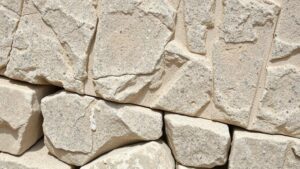How to Prospect in Rivers and Streams for Fine Gold
How to Prospect in Rivers and Streams for Fine Gold
Prospecting for fine gold in rivers and streams is a rewarding endeavor that combines skill, patience, and the effective use of tools. This article will explore the processes, techniques, and best practices for locating fine gold deposits, providing enthusiasts with the knowledge needed to enhance their prospecting efforts.
Understanding Gold Deposits
Gold can be found in its natural state at various points in river systems. Understanding how and where gold accumulates is crucial for effective prospecting. Gold is primarily found in a free state in rivers and streams, often referred to as placer gold. This type of gold is derived from the weathering of lode deposits found in the surrounding mountains and hills.
- Gold is denser than most other minerals, which means it tends to settle in the riverbed.
- Concentrations of fine gold can be influenced by the velocity of water flow, with slower-moving areas allowing gold to drop out of suspension.
Essential Tools and Equipment
Successful gold prospecting requires the right tools. Below are common tools utilized in the search for fine gold:
- Pans: Gold pans are essential for separating gold from other materials. A standard 14-inch pan is effective for most prospectors.
- Sluice Boxes: A sluice box helps in processing larger amounts of material efficiently, allowing the water to carry away lighter materials while trapping heavier gold particles.
- Metal Detectors: You can use metal detectors to locate nuggets or coarse gold that may not be easily found with traditional methods.
- Classifiers: These are used to sort materials by size, which can help in improving the efficiency of panning or sluicing.
Identifying Ideal Locations
Identifying the right locations is paramount in fine gold prospecting. Focus on areas where gold is likely to accumulate:
- Inside Bends: The inside of river bends slows down the water flow, creating areas of lower turbulence where gold can settle.
- Behind Obstacles: Large rocks, fallen trees, or other obstructions in the river create eddy currents that trap gold.
- Pay Streaks: Conduct research to identify known pay streaks historically rich in gold production, some of which may be documented by local prospecting groups or geological surveys.
Techniques for Prospecting
When you have chosen a location, the next step is implementing proper techniques. Here are some effective methods:
- Panning: Fill your pan with material from the riverbed and submerge it in water. Gently shake and swirl the pan to allow the lighter material to wash away while retaining the heavier gold.
- Sluicing: Set up a sluice box in a suitable location. Feed material into the box while allowing water to flow through it, which will trap gold in the riffles.
- Dry Washing: In arid regions where water is scarce, dry-washing methods can efficiently recover fine gold through air flow and vibration.
Environmental Considerations
Prospecting should always be conducted with respect for the environment. Unauthorized extraction or improper methods can lead to degradation of river ecosystems. Always adhere to local regulations, and consider the following:
- Obtain necessary permits before beginning any prospecting activities.
- Minimize disturbance to the riverbanks and surrounding vegetation.
- Practice Leave No Trace principles by packing out all materials and trash created during your prospecting.
Real-World Applications
The techniques outlined in this article are not only theoretical but have been tested and proven in the field. For example, recreational miners in California have regularly found fine gold along the Feather River using sluice boxes and panning methods. Also, many successful prospectors form small communities allowing them to share tips, collaborate in research, and enhance their collective success rates.
Actionable Takeaways
Prospecting for fine gold in rivers and streams offers both adventure and potential profit. Remember to:
- Equip yourself with proper tools such as pans and sluice boxes.
- Identify areas where gold is likely to settle based on hydrology and physical geography.
- Employ effective prospecting techniques to maximize your chances of finding fine gold.
- Stay environmentally conscious, adhering to regulations and best practices.
With this knowledge in hand, aspiring prospectors can venture into the field with increased confidence and expertise. Happy prospecting!

